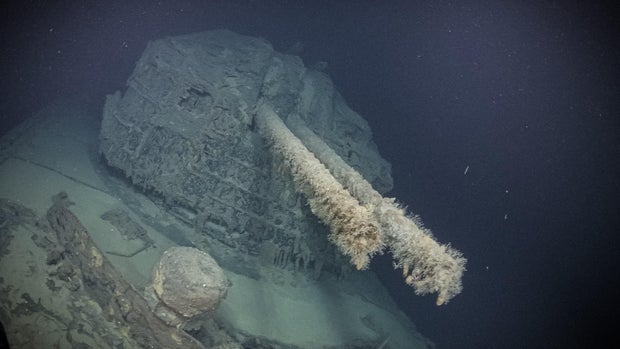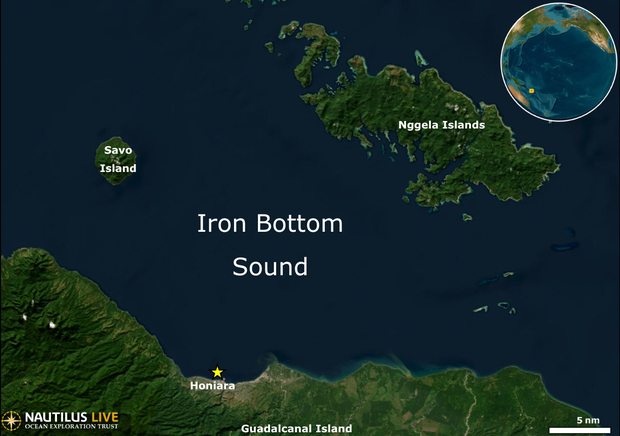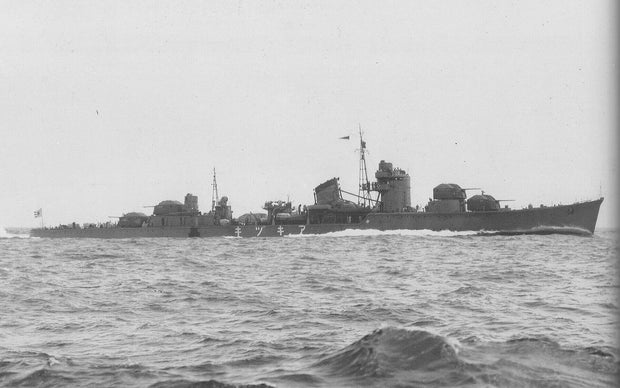A famed Japanese destroyer sunk by U.S. torpedoes during a pivotal battle in World War II has been discovered on the floor of the Pacific Ocean more than 80 years after it sank, an exploration team has revealed. The warship was found still armed with unused depth charges, according to the explorers.
The Imperial Japanese Navy destroyer Teruzuki was located by a remotely operated vehicle more than 2,600 feet below the ocean’s surface near the Solomon Islands, the Ocean Exploration Trust announced on Saturday.
“Lying on the seabed at over 800 meters in the Solomon Islands, this is the first time anyone has laid eyes on Teruzuki since it was sunk in WWII’s naval battles off Guadalcanal,” said the trust, which released images and video of the wreck.
Ocean Exploration Trust
Teruzuki (which translates to “Shiny Moon” in Japanese) was under the command of Rear Admiral Raizou Tanaka. The legendary naval leader earned the moniker “Tenacious Tanaka” among U.S. forces for leading dangerous attacks and so-called “Tokyo Express” supply missions during the middle of the night.
Weeks before descending to its watery grave, the Teruzuki used its state-of-the-art weaponry to great effect. In November 1942, the 400-foot-long Akizuki-class destroyer used its rapid-fire 100mm guns to help sink two U.S. destroyers, according to the U.S. Naval Institute. The Teruzuki’s torpedoes also severely damaged two other U.S. battleships.
But on December 12, 1942, the Teruzuki was targeted by American PT boats as it tried to protect a convoy of supply ships on Guadalcanal’s northern coast, according to historians. The Teruzuki was hit by two U.S. torpedoes, breaking its rudder and disabling the ship. Most of the crew were rescued or swam ashore, but nine men died as the Teruzuki plunged to the bottom of the ocean.
A remotely operated camera launched by the Exploration Vessel (E/V) Nautilus brought the first glimpse of the ship since that day when it spotted the wreck on July 10, the trust said. The massive warship had been severed, with its stern and hull 650 feet apart on the seafloor — but its munitions were still intact.
An eerie video released by the trust shows the stern armed with multiple depth charges. One scientist can be heard on the video saying that an expert warned the team to be “extra careful as some Japanese ordnance at this time of the war had a reputation for being really sensitive.”
Ocean Exploration Trust
The team also noted that the ship was found with its forward artillery turrets pointing skyward.
“When the exploration team found a 19-meter-long severed segment of Teruzuki’s stern littered with depth charges, it disproved a long-held theory that it was depth charge explosions that sealed the ship’s fate,” the trust said in a separate news release.
Ship located in Iron Bottom Sound
Iron Bottom Sound in the Solomon Islands was the site of five pivotal naval battles between August and December 1942.
Located about 600 northeast of Australia, the Solomon Islands became coveted territory for both Japan and the Allied Forces during World War II. The tiny island of Guadalcanal was key because of its airfield and its location, which offered command over shipping lanes in the region.
“Recognizing this island and airfield’s strategic value, both sides would soon commit substantial naval and air resources to control the island, the airfield, and its surrounding waters,” the Ocean Exploration Trust said.
Ocean Exploration Trust
Dozens of warships were sunk in Iron Bottom Sound, and the Teruzuki is just the latest to be discovered. Earlier this month, the same researchers found the severed bow of the American warship USS New Orleans during seafloor mapping operations in the area.
In addition to the Teruzuki, at least six Japanese warships were lost off Guadalcanal between August and December 1942, according to the trust, and at least 10 Allies ships were lost during the same period.
One of the American vessels lost in the area ws the USS Laffey, a Benson-class destroyer that survived a major battle in October 1942 but was sunk in Guadalcanal on November 12, 1942. One of the ships that sank USS Laffey was in fact the Teruzuki, which had only seen combat for a few months until its demise.
The designs and details of Japanese naval ships were cloaked in secrecy during World War II. There are no historical images of the Teruzuki, making the new discovery especially revealing, the trust said.
Kure Maritime Museum
“I feel so lucky to see this ship. The fact that we have not seen Teruzuki in over 80 years underscores the importance of recording maritime heritage now,” said Hiroshi Ishii, a Nautilus science team member and researcher at Kyoto University. “As a Japanese person, I appreciate the opportunity to witness part of our history and to be part of an international team shedding light on this campaign, which is important to all of our nations’ history.”
In 2023, the wreckage of a Japanese ship that was torpedoed during World War II off the coast of the Philippines was found. The ship was carrying Allied prisoners of war, most of them Australians, when it sank in 1942. All 1,080 people aboard perished.
Great Job & the Team @ Home – CBSNews.com Source link for sharing this story.





